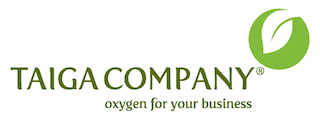These Are The Essentials Your Small Business Needs To Survive
One out of every two small businesses fails—challenging odds to say the least. However, there are ways you can maximize your small business’s chances of succeeding and thriving. Read on to find out what they are.
Human resources
Whether you have your in-house team or outsource human resources to a consultant, having someone managing the most valuable resource in your small business will increase your chances of success.
Human resources can help you with all sorts of things such as recruitment, and retention as well as disciplinaries, and even letting people go if it comes to it. All, while leaving you free to dedicate your time and focus on the rest of the tasks that need to be completed for your business to thrive.
Marketing and advertising
Every business needs to make use of marketing and advising if they are to reach their true potential. This is because marketing and advertising make sure that the people that most want your product or service know that it and your business exist.
Of course, the type of marketing and advertising you use will depend on a range of factors including your budget, and what will most appeal to the target market you are trying to attract. Whether you are looking for more sales in the short and long term will play into this as well with PPC advertising being better for the former, and SEO marketing for the latter.
Quality control procedures
If you want your business to be successful, then you must have quality control procedures in place. Such procedures aim to check the quality of each unit of product or service to ensure it remains high, and customers stay satisfied.
Generally, quality control tends to be easier to check when you are making a physical item as there will be some manual actions you can do to test the product. However, quality control testing is still possible when you are offering a service, you just need to focus more on employee attitude and performance.
If you have a product-based business, then the quality control procedure is something you must do at all points of your manufacturing process. You must be proactive and consider what items and procedures you need in place not just to properly check your products, but to also prevent any issues. This also means considering the things you are doing before and after product development. A good example of this is the packaging process. Not only do you need to have high-quality packaging to store your items and pass the quality process, but it also matters how you look after the packaging. There are many things you can use, for example, un packaging containers that will keep them protected and ready for use and shipping.
The right equipment
Another essential that your small business needs to thrive and survive is the right equipment. Although, what equipment is right will very much depend on the type of business you are running.
For example, a sales-oriented business will need registers and card payment terminals, as well as stock bar code scanners. However, the manufacturer business will need items like this ball nose end mill which is a specialist tool that can be used to create mold and dies and turbine blades, and every business will need the best fiber internet provider in the area. Indeed, without these very epics list items some businesses would just not be able to function, so investing in good quality, and making sure you have a secure supply chain is well worth your time if you want your business to succeed.
A fully optimized website
Also, investing in a professionally designed website is a strategic move that can significantly contribute to the growth of your business with minimal hassle. A well-crafted site not only establishes a strong online presence but also serves as a 24/7 virtual storefront, reaching potential customers around the clock. Experts like
Cullen Fischel can provide you with a website with intuitive navigation and user-friendly features to boost your customer engagement and conversion.
Risk management
Another thing that every small business will need to be successful is a good grasp of risk management. Risk management is all about identifying the things that could pose a threat to the success of your business and coming up with proactive ways to deal with them, if not avoid them altogether.


